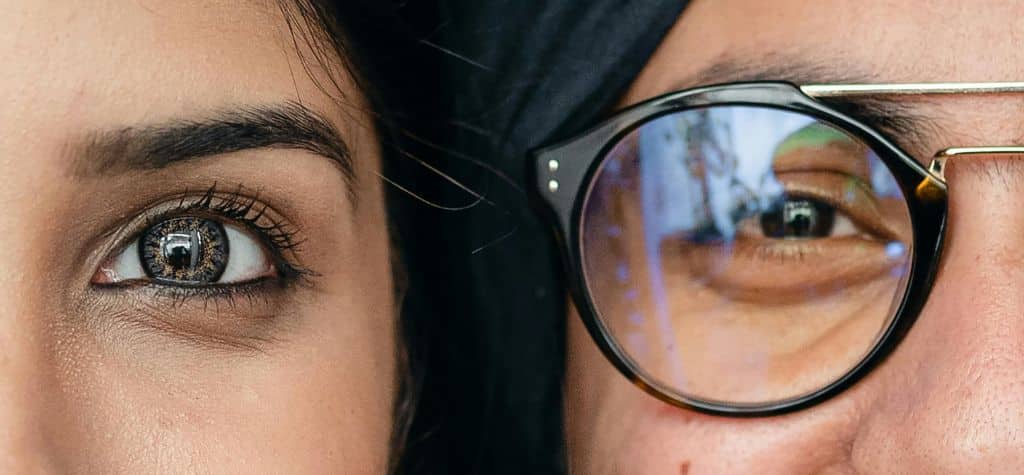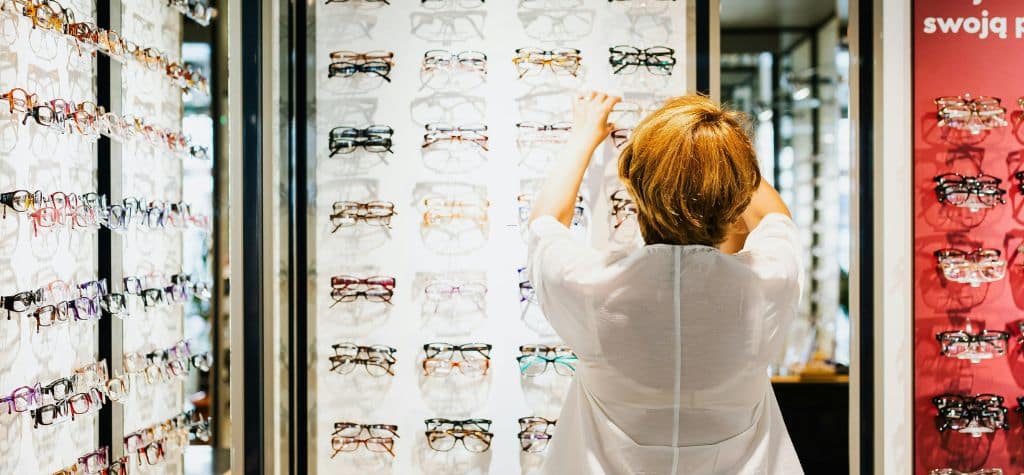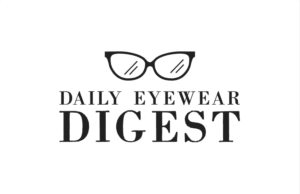Understanding How Glasses Work

Wearing glasses is the most common solution for vision correction. Yet, many people wonder whether glasses are actually helping or harming their eyesight over time.
The Role of Lenses in Vision Correction
Glasses correct vision by adjusting the way light enters your eyes. In nearsightedness (myopia), light focuses in front of the retina, and glasses shift that focus back. In farsightedness (hyperopia), light focuses behind the retina, and glasses help bring it forward. Essentially, glasses don’t change the eye’s structure—they modify light to bring it into sharp focus.
How Prescription Strength is Determined
Eye doctors use a series of tests to determine your refractive error and the exact lens power needed to give you the clearest vision. The prescription compensates for how your eyes bend light and helps reduce strain caused by blurry vision.
The Origins of the “Glasses Make Eyes Worse” Myth
It’s a widespread belief that wearing glasses weakens your eyesight over time. But where did this idea originate?
Common Misconceptions
Many people believe their eyes get worse because they rely on glasses, especially when their prescription increases. However, changes in vision are typically caused by natural eye development or aging—not by wearing glasses.
Historical Beliefs and Optical Myths
Before the advancement of modern optometry, poor vision was misunderstood, and glasses were often seen as a sign of eye weakness. Myths about dependency and eye muscle atrophy have persisted, despite having no scientific basis.
Do Glasses Weaken Your Eyes Over Time?

Contrary to popular belief, glasses do not make your eyesight worse.
Scientific Studies on Visual Acuity Changes
Numerous peer-reviewed studies have confirmed that glasses do not cause permanent changes to eye structure or function. Your eyes may change due to genetic or age-related reasons, but wearing glasses simply allows you to see clearly during those changes.
What Happens When You Don’t Wear Them
If you skip wearing your glasses, your vision won’t improve. In fact, it may cause more problems like headaches, squinting, or fatigue. Your eye muscles may work harder, but this doesn’t mean they’re improving—it means they’re straining.
Eye Muscles vs. Glasses – The Real Story
There’s often confusion about whether wearing glasses makes eye muscles “lazy.”
Accommodation and Eye Muscle Function
Accommodation is your eye’s ability to adjust focus between distances, thanks to the ciliary muscles. Glasses don’t weaken these muscles; they simply bypass the need for them to overcompensate for vision errors.
Can Glasses Affect Natural Eye Focus?
No, glasses do not interfere with the eye’s ability to focus naturally. Instead, they reduce the strain placed on your eye muscles, especially during tasks like reading or computer work.
What Happens When You Wear the Wrong Prescription?
Wearing the wrong prescription can be uncomfortable but isn’t harmful in the long term.
Overprescription and Underprescription Effects
An overly strong or weak prescription may result in headaches, dizziness, or blurred vision. While it doesn’t damage your eyes, it can certainly make your daily activities more difficult.
Symptoms of a Bad Prescription
- Frequent eye strain or fatigue
- Blurred or double vision
- Headaches, especially after screen time
- Difficulty focusing on near or distant objects
If you notice these symptoms, it’s important to schedule an eye exam.
Can Glasses Cause Eye Fatigue or Dependency?

It’s not uncommon to feel “addicted” to glasses, especially if you’ve worn them for a long time.
Eye Strain and Headaches
Improper lens alignment, outdated prescriptions, or insufficient lens coatings can all contribute to eye strain. However, these problems are typically resolved by updating your prescription or lens type.
Psychological Dependency vs. Physical Effects
The feeling of dependency is mostly psychological. Once you’re used to seeing clearly, going without glasses can feel uncomfortable—even though your eyes haven’t become weaker.
Progressive Lenses vs. Single Vision Lenses
Choosing the right lens type can impact your comfort and clarity, but not your eye health.
Pros and Cons
| Lens Type | Benefits | Considerations |
|---|---|---|
| Progressive | Multifocal support; one pair for all distances | Requires adjustment period; can be costlier |
| Single Vision | Simple and effective for one visual range | Doesn’t support multiple viewing distances |
Which One Affects Vision More Over Time?
Neither option negatively affects your vision over time. The choice depends on your needs, such as work requirements and lifestyle preferences.
Children’s Eyes and Glasses Use
Children often experience natural changes in vision that can lead to confusion about the effects of glasses.
Myopia Progression in Kids
Childhood myopia can worsen due to genetics, lack of outdoor activity, or excessive screen time. Glasses don’t accelerate this process—they simply correct vision during its progression.
Role of Outdoor Activities and Screen Time
Studies have shown that spending time outdoors helps slow down myopia development. Exposure to natural light and reduced close-up tasks contribute positively to eye health in children.
Blue Light Glasses and Eye Health

With digital screen usage on the rise, many turn to blue light glasses for relief.
Do They Help or Harm?
Blue light glasses may help reduce symptoms of digital eye strain, such as dry eyes or fatigue. However, they don’t improve vision or protect against long-term eye damage.
Studies and Findings
Current research offers mixed results. Some users report benefits, while others notice no significant change. Still, they’re a low-risk option for people who spend hours in front of screens.
Are Contacts Better Than Glasses for Vision Health?
Contacts and glasses both offer effective vision correction, each with its own pros and cons.
Comparison of Long-Term Effects
Contacts offer a wider field of view and more natural sight. However, they require strict hygiene and regular replacement to prevent infections. Glasses are less intrusive and easier to maintain but may be less convenient for active lifestyles.
Risk Factors for Each Option
- Contacts: Potential for dry eyes, infection, and corneal damage
- Glasses: No direct risks, though peripheral vision may be limited
Ultimately, both are safe when used responsibly.
Natural Eye Exercises – Fact or Fiction?
Some claim that eye exercises can improve vision without glasses. But what does science say?
Can You Improve Vision Without Glasses?
Eye exercises may improve comfort, focus, or coordination, particularly in people with eye alignment issues. However, they won’t reverse refractive errors like myopia or astigmatism.
Evidence-Based Approaches
Orthoptic therapy, prescribed by eye specialists, can help certain visual disorders. For the general population, the benefits of common eye exercises are minimal and not a substitute for corrective lenses.
Tips to Protect and Preserve Your Eyesight
Maintaining good vision requires healthy habits and proactive care.
Lifestyle Adjustments
- Take regular breaks from screens using the 20-20-20 rule
- Avoid smoking and manage chronic conditions like diabetes
- Wear sunglasses to protect from UV rays
- Schedule annual eye exams
Nutrition and Eye Care Routines
- Include leafy greens, omega-3 fatty acids, and carrots in your diet
- Stay hydrated and avoid excessive screen time
- Use proper lighting when reading or working
When to Update Your Prescription

Keeping your prescription current is essential for visual comfort and health.
Signs It’s Time for a Check-Up
- Frequent headaches or blurry vision
- Squinting to read or see distant objects
- Eye strain after short reading sessions
How Often Should You Visit the Eye Doctor?
Most adults should have an eye exam every one to two years. Children and older adults may need more frequent check-ups.
How Digital Devices Affect Vision
The modern digital lifestyle comes with visual consequences.
Digital Eye Strain
Symptoms include dry eyes, blurred vision, and headaches. Prolonged exposure to screens without breaks can lead to discomfort and fatigue.
The 20-20-20 Rule Explained
To combat digital strain, follow the 20-20-20 rule: every 20 minutes, look at something 20 feet away for at least 20 seconds. This helps relax your eye muscles and maintain comfort.
The Future of Vision Correction Technologies
Vision correction continues to evolve rapidly with new technologies.
LASIK, Smart Lenses, and AI in Optometry
LASIK surgery offers permanent correction for many people, while smart lenses and AI-based diagnostics promise early detection and personalized treatment. The future looks bright for improving how we manage vision health.
Frequently Asked Questions
1. Are glasses making my vision worse?
No. Glasses correct vision and don’t weaken your eyes. Changes in vision are natural and not caused by wearing glasses.
2. Can eyesight improve naturally?
While lifestyle changes and eye exercises may offer comfort, they won’t reverse refractive errors like myopia.
3. Should I wear glasses all the time?
Yes, if prescribed for full-time wear. This helps prevent unnecessary strain and ensures clear vision.
4. Can kids outgrow the need for glasses?
Some children may experience vision changes as they grow, but regular check-ups are necessary to determine their needs.
5. Are contact lenses safer than glasses?
Contacts are safe with proper hygiene, but glasses carry less risk of infection.
6. Do blue light glasses really work?
They may reduce digital eye strain for some users, but scientific evidence on their effectiveness is still inconclusive.
Conclusion
So, are your glasses making your eyes worse? The answer is no. Glasses are tools that help correct your vision—not harm it. While your eyes may change over time due to age or lifestyle, your glasses simply evolve with you. Maintaining good eye health through regular check-ups, healthy habits, and proper lens use ensures your vision stays sharp and strong.

